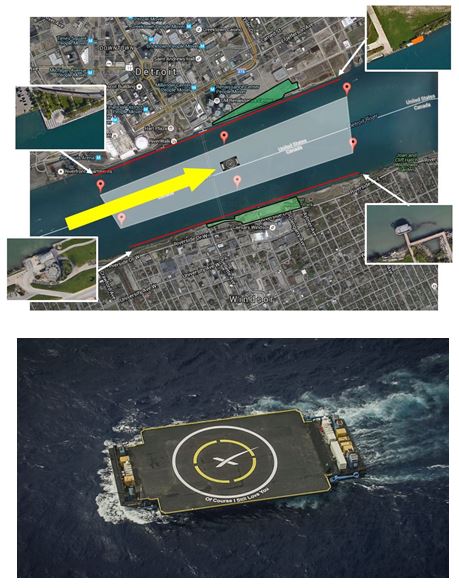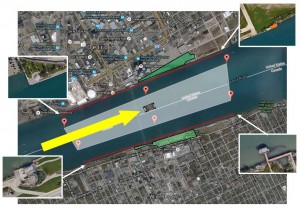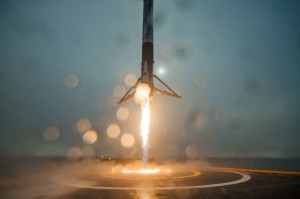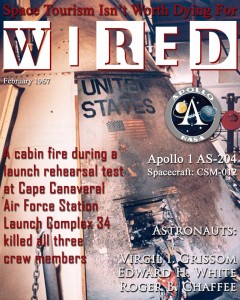 The Tuskegee Airmen National Historical Museum and SpaceX dropped a bombshell this morning at press conference on the Detroit waterfront. This year’s Tuskegee Airmen Detroit River Days Airshow will feature the recovery of the first stage of a Falcon 9 rocket on SpaceX’s drone ship on the Detroit River in front of an audience that could reach more than a million spectators.
The Tuskegee Airmen National Historical Museum and SpaceX dropped a bombshell this morning at press conference on the Detroit waterfront. This year’s Tuskegee Airmen Detroit River Days Airshow will feature the recovery of the first stage of a Falcon 9 rocket on SpaceX’s drone ship on the Detroit River in front of an audience that could reach more than a million spectators.
SpaceX CEO Elon Musk said, “There would be no SpaceX if it weren’t for the dreams that power the company and its missions. For many people, that dream starts at an airshow. What better time and place let people have a close look at what those dreams can bring?” Musk flew to Detroit for the announcement after yesterday’s press events in Hawthorne, California surrounding the beginning of production of Tesla Motors’ Model 3.
Steve Tupper, who is in charge of the airshow, for the museum said, “I don’t think I have to tell you how excited we are about this addition to the show. Over the last four years, we’ve been bringing the show along. In 2014, we had a 500-foot waiver. Last year, we took the waiver all the way down to the surface and added aerobatic performances. We had no idea that 2016 would see a spectacle that has never occurred at any airshow before now.”  SpaceX made headlines in December of 2015 by successfully bringing the booster stage of a Falcon 9 first stage to a soft landing at Kennedy Space Center’s Landing Zone 1. For the airshow event, SpaceX will land another Falcon 9 first stage, this time on SpaceX’s Autonomous Support Drone Ship. Musk says that the drone ship will begin its trek to Detroit in early June. The ship is expected to arrive the week before the airshow and moor at Port Detroit.
SpaceX made headlines in December of 2015 by successfully bringing the booster stage of a Falcon 9 first stage to a soft landing at Kennedy Space Center’s Landing Zone 1. For the airshow event, SpaceX will land another Falcon 9 first stage, this time on SpaceX’s Autonomous Support Drone Ship. Musk says that the drone ship will begin its trek to Detroit in early June. The ship is expected to arrive the week before the airshow and moor at Port Detroit.  For the landing, the drone ship will take up a position in front of the River Days festival grounds near the Renaissance Center and near the middle of the Detroit River on the U.S. side of the U.S.-Canadian border. “We’ve had our issues in the past with getting the Falcon 9 first stage to land on the boat, but we think that we have things ironed out and this will be a great opportunity to demonstrate our improved capabilities,” said Musk.
For the landing, the drone ship will take up a position in front of the River Days festival grounds near the Renaissance Center and near the middle of the Detroit River on the U.S. side of the U.S.-Canadian border. “We’ve had our issues in the past with getting the Falcon 9 first stage to land on the boat, but we think that we have things ironed out and this will be a great opportunity to demonstrate our improved capabilities,” said Musk.  The landing is expected to take place at 1:05 Detroit time on Friday, June 24 to kick off this year’s installment of the show. To make its date with the Detroit riverfront, the Falcon 9 rocket (called the “full thrust” version) will launch from Cape Canaveral in Florida about 12 minutes before the scheduled landing. After thrusting for nearly four minutes, the main engines will shut down. Seconds later, the first stage will separate and the second stage will fire, propelling a new Civil Air Patrol search-and-rescue satellite into a polar orbit.
The landing is expected to take place at 1:05 Detroit time on Friday, June 24 to kick off this year’s installment of the show. To make its date with the Detroit riverfront, the Falcon 9 rocket (called the “full thrust” version) will launch from Cape Canaveral in Florida about 12 minutes before the scheduled landing. After thrusting for nearly four minutes, the main engines will shut down. Seconds later, the first stage will separate and the second stage will fire, propelling a new Civil Air Patrol search-and-rescue satellite into a polar orbit.
The first stage will then orient itself and begin its controlled descent to the waiting drone ship on the river. “It wasn’t easy to make this happen,” says Tupper. “FAA regulations require that we keep performers at least 500 feet away from the crowd, and that includes rockets.” Although it will require additional propellant for both the rocket’s main engine and its directional thrusters, the rocket is expected to approach the drone ship from the southwest and track along the Detroit River over the Ambassador Bridge before touching down on the drone ship.
Federal Aviation Administration Aviation Safety Inspector Art Bangle described the complexities. “The museum has asked the FAA to authorize an operation involving a tube full of highly volatile fluids and gasses very close to maybe a million people in two countries and right in the middle of a navigable waterway. Ordinarily we would ignore such a request as we would an April Fool’s Day joke. But Steve and the airshow staff are steely-eyed operators who have planned for every contingency. The FAA wouldn’t authorize them to give it a try if the FAA didn’t have full faith in that team.”
Team Tuskegee, the museum’s airshow formation team, is practicing a maneuver in which its four TG-7A motorgliders will circle the rocket stage as it descends below about 1,000 feet above the water and follow it all the way to touchdown. Tupper says that he is excited this spectacle will have a distinctly Detroit flavor. “There are two major airshows – Thunder over Michigan and the Selfridge ANGB show – that are so close to the team’s home airport here in Detroit that we have to be careful not to bust their airspace when we go places. Despite that, they never include us in their shows. Come to think of it, they hardly ever have anybody from Michigan in their shows. So maybe, until they get their own circle-the-rocket opening, we can be as cool as they are.”
Tupper says that he is excited this spectacle will have a distinctly Detroit flavor. “There are two major airshows – Thunder over Michigan and the Selfridge ANGB show – that are so close to the team’s home airport here in Detroit that we have to be careful not to bust their airspace when we go places. Despite that, they never include us in their shows. Come to think of it, they hardly ever have anybody from Michigan in their shows. So maybe, until they get their own circle-the-rocket opening, we can be as cool as they are.”
Other performers are expected to include displays of aerobatic, formation, and other flying by pilots and aircraft from southeast Michigan and Windsor, Ontario. More than 75% of the airshow performers are from the area. Asked about the best opportunities for viewing the event, Tupper said, “Every place along the rail on either side of the river will be the best seat in the house. Just get there early and be patient as you depart.”
The fireworks displays during the Windsor–Detroit International Freedom Festival draw about a million spectators to the riverfront every year, often causing legendary traffic snarls. Airshow organizers believe that attendance for the SpaceX landing might double that number.
SpaceX images used under Creative Commons Attribution/Share Alike.


